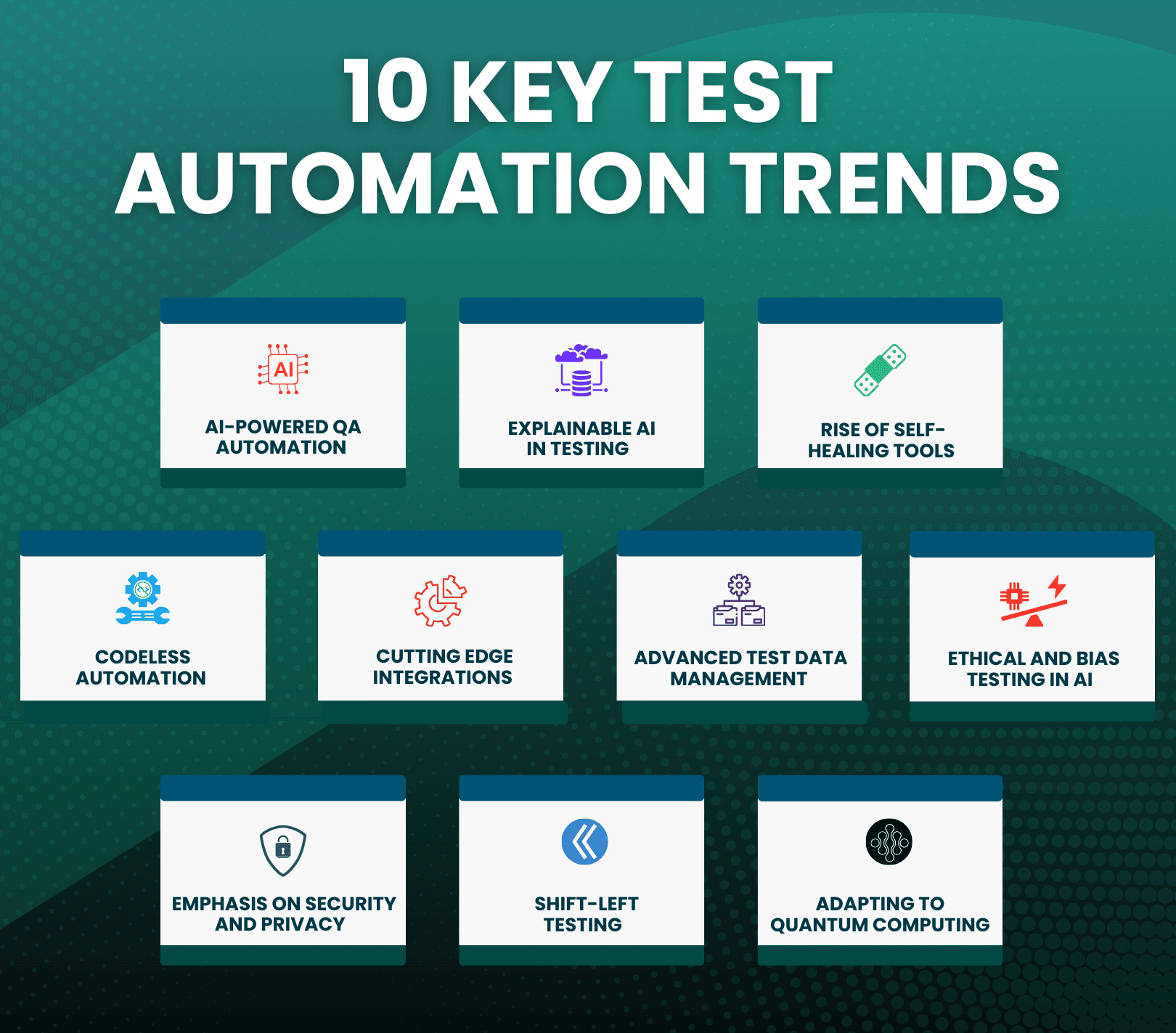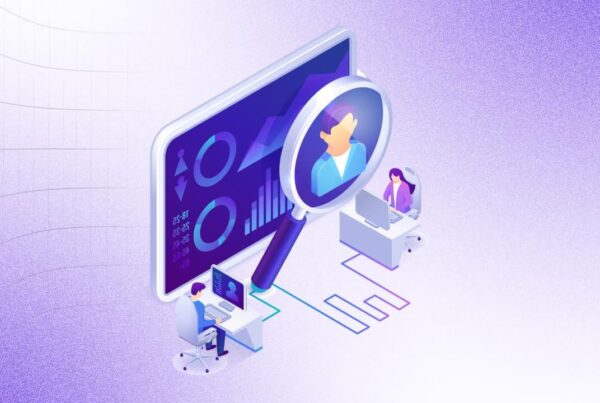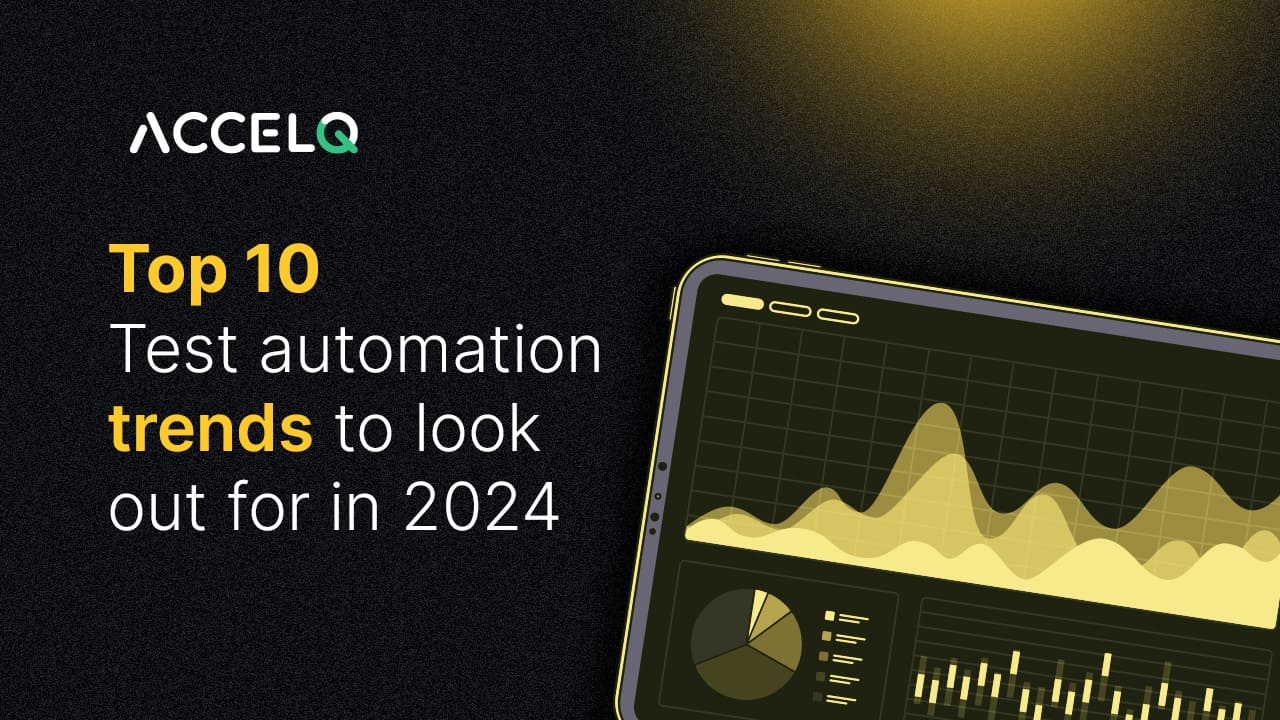Top 10 Test automation trends to look out for in 2025

Test automation has become integral to the Software Development life cycle today. Testing has risen above identifying bugs in an application; it helps testers enable proactive action to ensure product functionality remains as intended throughout the testing cycle. Test automation trends 2024 emphasizes more why testers need to improve testing tactics and understand the role of new technologies such as AI in testing.
"The Automation Testing Market size is estimated at USD 32.08 billion in 2024, and is expected to reach USD 67.48 billion by 2029, growing at a CAGR of 16.03% during the forecast period (2024-2029)" -Mordor Intelligence.
Test automation trends listed below will guide testers and help them employ tactics that ensure that the product meets the required quality, security, and compliance requirements and, most importantly, remains scalable.
Understanding Key Test Automation Trends 2024
Given the pace at which new trends unfold, it is crucial to keep up with the future of testing. Let us now look at the following trends in test automation:

1. AI-driven QA Transformation
AI is not just a tool anymore; it's becoming a cornerstone in Automated testing. AI-driven automation is streamlining testing processes, making them more efficient and accurate. This marks a significant shift in how traditional automated testing is conceptualized. AI and associated machine-learning capabilities will allow entire teams to automate the testing process enabling efficient test asset management. Analytic-based algorithms with in-built traceability will drive automated test planning for test-driven development (TDD), ensuring high coverage, low maintenance, and upkeep. It can also help scan every line of code and open opportunities for refactoring, better adherence to coding standards, and quicker action on code vulnerabilities.
2. Explainable AI in Testing
As an extension to the above top test automation trends 2024, Explainable AI will play a role in leveraging AI tools that provide transparent and understandable test results, enhancing trust and reliability in automated testing processes In 2024, businesses will be compelled to prioritize explainable AI models; this will help with greater transparency and trust in decision-making processes. The primary objective of embracing this shift is to comply with evolving regulatory standards and to meet customer demands for more understandable AI-driven outcomes. This, in turn, will see a growth in expertise, such as in explainable AI frameworks and tools like LIME, SHAP, and TensorFlow, leading to mainstream adoption of AI.
3. The rise of Self-healing tools
Self-healing tools will help testing teams proactively find and fix problems – even before they occur. Since these machine learning-based tools learn from experience, the more tests run, the more intelligent they become at creating and maintaining stable tests. These tools will also scan through millions of bits of data flowing through the DevOps pipeline and refine them into important takeaways, helping stakeholders make informed decisions – thus making testing pipelines faster, leaner, and smarter.
4. Codeless automation
The democratization of QA is a crucial trend, empowered by codeless automation tools. These innovative solutions are enabling a wider range of professionals, irrespective of their coding expertise, to participate in test automation, thereby adding diverse perspectives and contributing to a more robust and user-centric product quality.
Statista states that "the global low-code platform market is forecast to amount to approximately 65 billion U.S. dollars by 2027."
Codeless testing allows testers to create automated tests without writing a single line of code, and teams can leverage advanced test scripts regardless of skill level. It can relieve testers from the complex and time-intensive process of writing complex test suites, expedite the test creation while maximizing testing reliability, stability, and efficiency across the SDLC (Software Development Life Cycle), allowing testers and developers time to focus on product innovation.
5. Cutting-edge integrations
Cutting-edge integrations that fit into existing testing ecosystems mean testers can always have a unified and updated view of the quality lifecycle. As testers continue to work via a hybrid work model, such integrations ensure flexibility and enable access to the tools for testers at any time, allowing teams to seamlessly work with full access to all the necessary test infrastructure. This will include centralized repositories and reporting portals, access-anywhere tools, managed resources, etc.
6. Advanced Test Data Management
The rise of sophisticated data analytics and synthetic data generation techniques is transforming TDM. This trend caters to the growing need for high-quality, diverse, and compliant test data, which is crucial for effective and realistic QA. The rise of sophisticated data analytics and synthetic data generation techniques transforms TDM or test data management. It'll further assist in optimizing test coverage and identifying the test result patterns that might have been challenging otherwise.
7. Ethical & Bias testing in AI
As AI becomes a standard part of software, QA will increasingly be responsible for testing for ethical implications and biases, especially in AI-driven decision-making systems. Increased focus on transparency and to cater to the need to understand and interpret their decision-making processes of AI. Cloud-based AI models often operate as “black boxes,” making it tough to understand how certain outcomes are arrived at. Explainable AI (XAI) tools are gaining traction, enabling users to comprehend the reasoning behind AI-driven conclusions and these features are integrated to platforms helping foster trust and accountability. Thus, platforms are compelled to align with the growing demand for ethical considerations in AI development, ensuring that AI driven decisions are accurate as well as understandable by stakeholders.
8. Emphasis on Security and Privacy
One key trend that should not be overlooked is the increasing focus on security and privacy in QA. As cyber threats evolve and data privacy concerns grow, QA will play a crucial role in ensuring that applications are not just functional but also secure and compliant with privacy regulations. The next generation of software development will have to emphasize trustworthiness in software development. Thus, 2024 will be the year where software development projects include guardrails for compliant, ethical, and secure end products. Features like encryption, access control, intrusion detection, and data protection will take center stage.
9. Shift Left
One among key automation testing trends in 2024 is the rise of emphasis on shift left testing. This involves executing automated tests earlier against code changes in the software delivery lifecycle instead of just pre-production. Enabled by CI/CD pipeline integration, shift left allows finding defects faster and earlier. DevOps teams will have to prioritize shift testing left in the lifecycle to run earlier against CI/CD pipeline code changes. Unit testing, integration testing, performance testing, and other types of testing will shift left.
10. Adapting to Quantum Computing
In 2024, with the emergence of quantum computing, QA may face new challenges in ensuring that applications are quantum-resistant and secure. This emerging trend signifies a unique niche in QA that demands specialized skills and knowledge. Quantum computing can enable computational capabilities and is already sectors like banking and aims to enhance AI capabilities for high-frequency trading, fraud detection, and risk management using this technology. The race to leverage the potential of quantum computing and its integration into mainstream technological infrastructure is just starting.
Conclusion
Test automation trends in 2023 witnessed a profound and ongoing growth of AI/ML in various aspects of business and technology; AI-powered products, like ChatGPT, are more accessible now. This accessibility, coupled with high investments in AI by industry leaders, has enabled a shared understanding among businesses across industries that demonstrates a collective awareness of the transformative potential of AI/ML. While these trends are a good starting point to adapt to the ongoing transformation of testing technologies, starting with a plan, and learning how to implement it is imperative. If your enterprise's long-term growth and success are high on your testing agenda for 2024, talk to our team about getting started with test automation immediately.
Arunanshu Pal
Digital Assurance & Quality Engineering
Arunanshu Pal is an accomplished technology leader in Digital Assurance & Quality Engineering. With over two decades of experience, He has been a transformation evangelist, crafting bespoke solutions and leading high-performance teams for global clients. At ACCELQ, as the Head of Customer Enablement, he advises, empowers, and elevates clients through their quality transformation journeys
Discover More
 Locators in Test Automation: A Deep Dive
Locators in Test Automation: A Deep Dive
Locators in Test Automation: A Deep Dive
 70% Lower maintenance on your Test Automation
70% Lower maintenance on your Test Automation
































